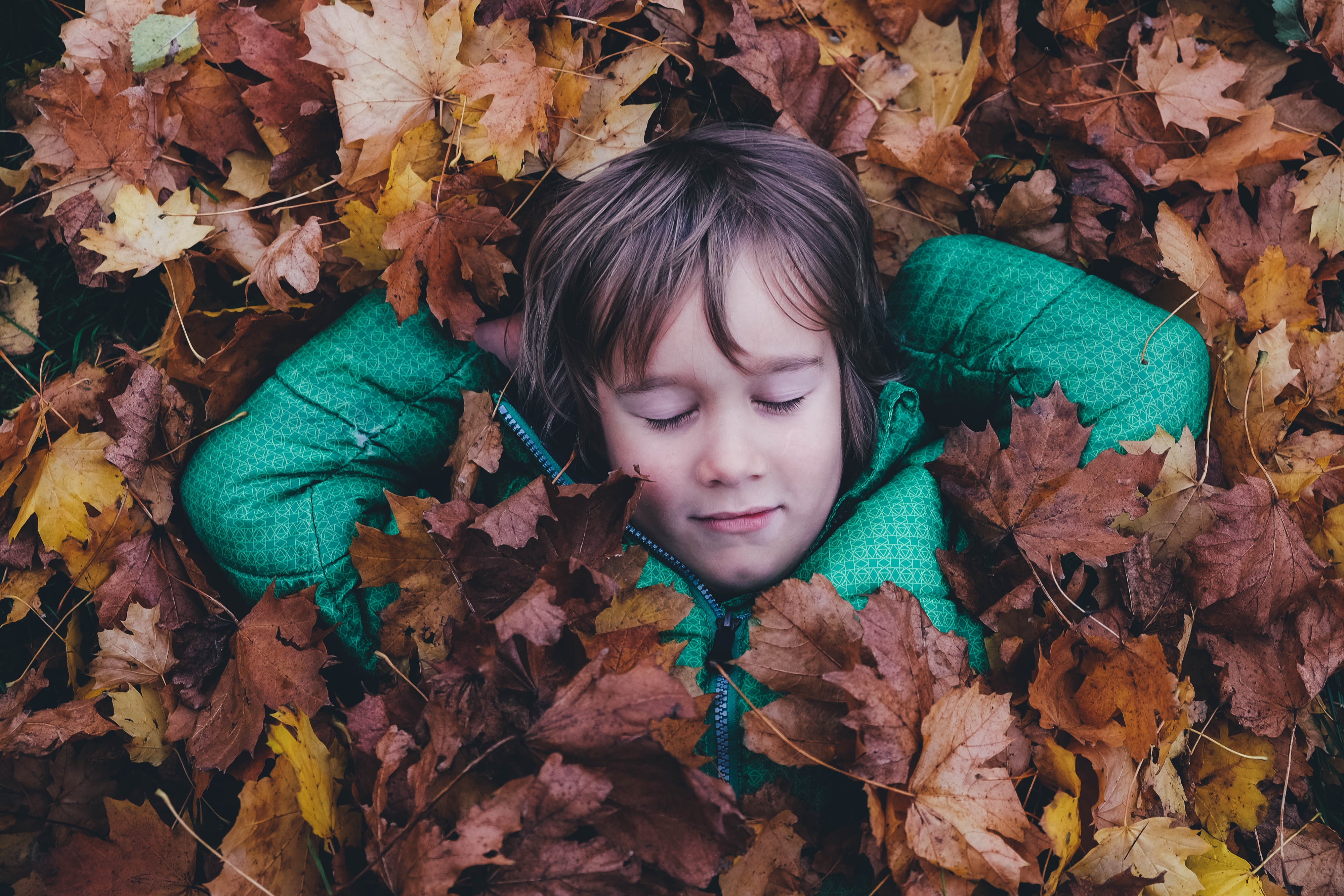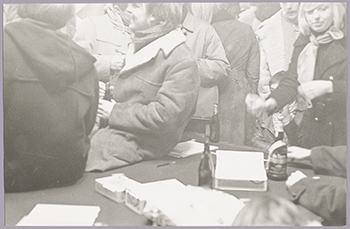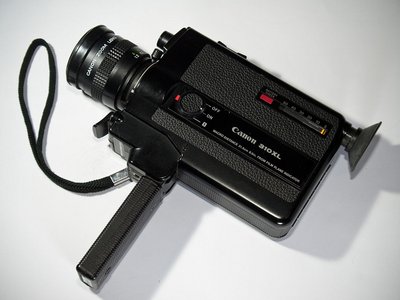How to raise your parents: Scandinavian children’s television in 1970s
Children’s departments in Scandinavian broadcasting corporations (in Denmark, Norway and Sweden) were clearly influenced by the call for equality and the influence of principles arising from the 1968 movement. Producers of children’s programmes worked extensively to democratise children’s television by, for example, taking children’s wishes and suggestions into account, and allowing them to take an active part in production. The close-knit collaboration within the Nordic broadcasting union, Nordvision, strengthened the articulation of ‘68’ ideas amongst the national broadcasters.

The years between 1963 and 1980 can be seen as a distinct period where some of the main characteristics of a Scandinavian ‘68’ surfaced and influenced children’s media. Children’s media at this time can be seen as fostering anti-authoritarianism and emancipation, and as a place where the private was political. These debates influenced programme policy and production, as well as other prominent issues at the time, such as equality, more aesthetic demands, and a greater awareness of the power struggles between political centres and the periphery.
Children’s programming landscape in 1960s and 1970s
In the 1960s and 1970s, all the Scandinavian countries had state monopolies on broadcasting. Within each country, television programmes were only produced by the national public service broadcasting institutions (Sweden: SVT, Norway: NRK, Denmark: DR). Broadcasting was paid for by a licence fee and thus not financially controlled by the government. The broadcasters’ policies were modelled on the BBC’s early ideals of providing fair and balanced information, education and entertainment to all the nations’ citizens. There was no direct political control over the content that was broadcast by the corporations as, while boards were made up of political and non-political appointments, they took a hands-off approach. This generally led to a greater sense of independence from established cultural and political institutions.
Changing norms in children’s media culture: children as active participants in society
During the 1960s and 1970s, there were various influential factors which led to a change in the programming policies in Denmark, Norway and Sweden, including:
- The 1968 movement:
Despite the less spectacular nature of the demonstrations, occupations and strikes in Scandinavia compared to many other countries, the influence of the student revolt and radical protest movements has been deemed just as wide here as elsewhere.

The office of the rector of Copenhagen University in 1968 flooded with students. The 1968 movement was less violent in the Nordics than elsewhere: the rector prevented police storming occupied buildings and led negotiations for equal representation of students and professors in departmental study boards. Photo: The Royal Danish Library
- Democratisation in children’s culture and television:
New thinking amongst the Nordic Council and the wider public of the Nordic countries recognised and nurtured children’s particular needs and wants, children’s ways-of-living and their wishes for society. This was influenced by a public debate sparked by the publication of Gunilla Ambjörnsson’s book Skräpkultur åt barnen (Trash Culture for Children, 1968). Ambjörnsson’s book criticised Swedish cultural products for children, including television programmes, for being either too nostalgic or mass-produced trash. She argued that they failed to give children a handle on reality and did not take them seriously, contrasting them with Czechoslovakian media products which involved children much more and Czechoslovakia, where children were seen as citizens (and media consumers) in their own right.
- A symposium hosted by the Nordic Council of Ministers in 1969 entitled ‘Children and Culture’ in Sweden:
At this symposium, key figures in children’s culture from the five Nordic countries met and came up with 10 principles about ‘children’s culture’. They stressed above all children’s equal worth as human beings and their right to be treated as such in all aspects of life:
"with greater independence [children] can dictate their own course of life and improve the society they live in...the greatest enemy of children’s culture is that which is authoritarian and uninspiring."
While it was clear that there was a movement to take into account children’s wishes, in practice, there were many discussions about what this actually meant. Librarians, authors and critics did, for instance, have vivid discussions about whether children’s desire for comics, cheap long-series books and magazines should be met in libraries – or, if this was an expression of ‘false consciousness’ and thus should not be accommodated.
Children’s programmes resulting from the new wave
Early influential examples of the new wave of children’s programming included:
- The Solrød-project was a cultural studies project in Denmark where a group of pupils in upper secondary school (9th grade) helped researchers to formulate questions for a survey amongst 600 schoolchildren (1st-10th grade) about what they did in their leisure time. The 9th graders also helped to collect and analyse the data and they presented their findings at the 1969 symposium hosted by the Nordic Council of Ministers.
- Extensive fieldwork was carried out amongst children during a SVT project in order to gather more knowledge about their young viewers’ interests as expressed by children themselves. The producers visited homes, schools and day care centres in Sweden and recorded about 1000 answers from children aged 3-13 years. The answers revealed that children were interested in all sorts of topics that were not currently part of the children’s schedule e.g. war, power, bullying, hunger, religion, drugs and pollution.
- How to raise your parents (Hvordan man opdrage sine forældre) was a Danish programme made in 1966 by DR’s Children, Youth and School Department and expressed anti-authoritarian views.
In Denmark in 1968, a reorganisation led to educational programming being separated from that orientated towards children’s leisure time. There was high-level backing for TV becoming a voice for children and for children to be treated in their own right; Mogens Vemmer, the new head of the Children and Youth department, stated that television should be children’s spokesperson since they had no other interest organisations, and the department’s policy stated that children should be able to express themselves freely and stand up to adult authorities. Poul Schlüter, chairman of the board for children and youth programming and later conservative prime minister, stated that children should be introduced to the same range of issues as adults, they should learn that adults were not always right, and be encouraged to make up their own mind, independently of adults.
Nordic cooperation and Nordic exceptionalism
By the 1960s, the formulation of children’s media policy on a Nordic level had already been undergoing increasing institutionalisation since the Second World War, often with the three Scandinavian countries (Denmark, Norway and Sweden) taking the lead. During debates surrounding comics and their worth in the 1950, a Nordic committee on children’s reading had been established, and the area of children’s films had also been a subject of inter-Nordic collaboration. By the end of the 1960s the collaboration had consolidated in permanent institutions. One of these was the Working Group for Children and Young People in the Nordic Broadcasting Union (Nordvision).
The Nordic corporation between broadcasters in Nordvision’s Subcommittee on Children and Youth Programmes was a forum which further strengthened the radical democratisation agenda seen in the individual policies of Denmark, Sweden and Norway. In the subcommittee there was a strong focus on television’s potential for empowering children.
 | Getting the child's view. Democratisation, including surveying children and incorporating children's views, was seen as crucial in 1970s. Photo: Photo by Hannah Rodrigo, Unsplash. |
One particular concern amongst Nordic broadcasters was how to get better feedback from child-viewers, in order to break down the ‘one-way’ communication that television was often used for. The subcommittee also discussed the issue of participation as an obligation that also meant being aware of how to cater for children of different ages, in different regions and different social conditions. This is in line with the heightened awareness of ‘post-colonial issues’ in the wake of ‘68’ in the sense that the broadcasters’ were conscious of the differences between centre and periphery in a socio-cultural and geographical sense.
In 1974, the Nordvision group agreed on a policy paper which they wanted to distribute to foreign producers of children’s programmes. The child-centred, democratic agenda where children’s culture included issues about equality and emancipation was at the fore of the policy agenda. Children’s television was clearly seen as a means to make children independent and emancipated. However, it is also clear that Nordvision considered Nordic children’s programming to be rather better than elsewhere in the world. While the intention was to show children the world in a manner that was as truthful as possible with unequal living conditions and so on, they had difficulty finding programmes that lived up to their high standards. Even though they purported to be inclusive, they also posited their approach as better and more unique than elsewhere.
Nordic co-productions
The possibility to easily co-produce and exchange programmes within Nordvision meant that the schedules of the Scandinavian broadcasters could be filled with many programmes that supported the same kinds of ideas about what type of media content children needed. Nordic co-productions included programmes on a broad range of genres and themes, but included a focus on real-life such as documentaries and particularly documentary-dramas. Examples included:
The productions To be 12 years old and the sequel To be 12 years old in 1972:
These informed children about the lives of their contemporaries in other Nordic countries and clearly had the intention of including children in the entire production process. 12 year-old participants decided the content in order to further a child-driven agenda in broadcasting for children. The programmes sought to convey the children’s social milieu as well as their thoughts, dreams and worldview, culminating in a final programme where all the Nordic productions were discussed.
A cluster of national projects run by the Nordvision committee ran parallel in all five Nordic countries:
These involved giving children Super 8mm cameras. It was an ambitious project; in the first two years alone (1970-1972) the Danish wing of the project facilitated the production of more than 550 films produced by children and young people (the estimated runtime was about 5min). The children’s department had bought over 30 cameras and 4-5 rolls of film per project. Children were encouraged to send in films either based on their own ideas, or to be used in a specific children’s nature programme. A commentator at the time reported that children often produced films in which they tried to replicate productions for adults and, in DR, there was much scepticism about the extent to which regular child viewers liked to watch these amateur productions. Additionally, capturing stories about children’s everyday lives in fact only happened occasionally. Despite this, one third of all the films made between 1970-72 were broadcasted (one third were rejected because of their poor content and the last third discarded due to technical failures).

Cameras similar to this one were given to children to get their view of the world in the early 1970s in all the Nordic countries. Many resources were devoted to the project with some success, although two thirds of the film was discarded due to technical failures and poor content, and commentators questioned whether children wanted to see amateur productions. Photo: By Uberprutser - Own work (CC BY-SA 3.0).
Live action drama:
The Nordvision committee also initiated co-production of live action drama. Amongst these were the high profile documentary-drama series Secret Summer (staring a very young Lars von Trier). Unlike many other programmes from this period, Secret Summer has been preserved in its entirety. In it the boy Lars (about 11 or 12 years old) is lonely, misunderstood by his friends, and badly treated by his parents (the film is seen from Lars’ point of view). His parents are poor and cannot afford to go on vacation during the summer holidays, so he runs away and befriends a Swedish girl, and the two of them spend the summer together. The social realistic drama gives viewers an insight into the lives, and particularly the feelings, of children. It carefully makes ‘the private political’ by exploring and showing the private and difficult emotions of the main characters, and it provided child viewers with ways to liberate themselves from adult authority by finding comfort in supportive peer-culture.
News programmes:
Finally, producing real news for children was viewed as central to making children’s television an outlet which children would take seriously. In 1971, the Nordvision committee saw an urgent need for news programmes made especially for children, not as a substitute for adult news, but as a scaffold which would make children better equipped to understand such programmes. This was because news for children would further acknowledge children were people in their own right, as well as supporting children’s capability to stand up for themselves and express their own needs when taking part in politics in general.
This is a shortened version of the author's article ‘Scandinavian children’s television in the 1970s: an institutionalisation of ‘68’?’ Strenæ. 13, 1. (2018).
Links:
Further reading:
- Stig Hjarvard, Dansk TV’s Historie (Frederiksberg: Samfundslitteratur, 2006).
- Eva Bakøy, Med fjernsynet I barnets tjeneste: NRK-fjernsynets programvirksomhet for barn på 60- og 70-tallet [NRK television programming for children in the 60s and 70s] (Oslo: Unipubforlag, 1999).
- Helle Strandgaard Jensen, ‘Prix Jeunesse and the Negotiation of Citizenship in Children’s Television’ Journal for the History of Childhood and Youth, 11, 1 (2018), p.101-107.
- Helle Strandgaard Jensen, ‘TV as Children's Spokesman: Conflicting notions of Children and Childhood in Danish Children's Television around 1968’ The Journal of the History of Childhood and Youth, 6(1) (2013), pp. 105-128.
- Helle Strandgaard Jensen, From Superman to Social Realism: Children’s Media and Scandinavian Childhood (Amsterdam; John Benjamins Publishing Press, 2017).
- Ib Bondebjerg, Opbruddet fra monopolkulturen. En institutions-og programhistorisk analyse af dansk tv [The break from the monopoly culture. An institutional and historical programming analysis of Danish television] In: Sekvens-Filmvidenskabelig Årbog, 1989, pp. 91-136.
- Ingegerd Rydin, Barnens röster: Program för barn i Sveriges radio och television 1925-1999. (Stockholm: Etermedierne i Sverie, 2000).
- Special Issue on 1968, Scandinavian Journal of History, 33(4), (2008).
- Terry H Anderson, ‘1968: The American and Scandinavian experiences’ Scandinavian Journal of History, 33(4), 2008, pp. 491-499.